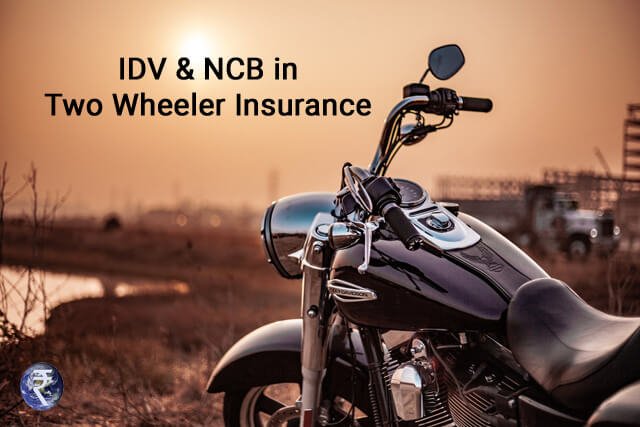Here’s How to Understand the Differences Between IDV and NCB in Two-Wheeler Insurance
All two-wheelers in India are required to have a two-wheeler policy. However, instead of simply purchasing it, one should actively gather all knowledge on it to better take advantage of the benefits available under the insurance policy. The Insured Declared Value (IDV) and No-Claim Bonus (NCB) of your two-wheeler and its insurance are critical considerations.
There are a few key terms to understand when it comes to two-wheeler insurance. Knowing the technical language will make purchasing insurance easier. Furthermore, you can gain from it by utilizing the policy more efficiently. The phrases IDV and NCB are both essential in the insurance sector.

What is IDV (Insured Declared Value)?
The Insured Declared Value is the market value of a two-wheeler vehicle (IDV). The most a policyholder’s insurer will pay if their two-wheeler is stolen or entirely damaged. If a policyholder’s two-wheeler is completely wrecked, he or she is entitled to a refund for repair or replacement costs.
The value of two-wheeled vehicles, like the worth of all physical items, depreciates over time. The premium for insurance coverage is exactly proportional to the IDV of the bike. As a result, as your bike ages, the IDV decreases, lowering the premium amount as well. The IDV can be calculated using the formula below:
Insured Declared Value = (Company’s listed selling price – depreciation value) + (Cost of bike’s accessories excluded from the listed selling price – depreciation value of accessories).
Also Read – 7 Free Insurance you may not be aware of
What Should be the IDV of Two-Wheeler Insurance?
Every policyholder must select an Insured Declared Value (IDV) of their bike or scooter supplied by the insurance company when purchasing a two-wheeler insurance policy. It is critical to report the value correctly since it will have a direct impact on the insurance price as well as the compensation amount that you can obtain if the insured two-wheeler vehicle is damaged, stolen, or suffers a constructive total loss.
If you choose a lower IDV that is less than your two-current wheeler’s market value, the insurance provider will provide you with a policy with a lower two-wheeler insurance premium; however, if you file a theft claim or a constructive total loss claim, the amount of compensation will also be quite low, which could result in significant loss for you. If, on the other hand, the declared IDV is greater than the current market value of your bike, you may be eligible for more reimbursement, but the insurance company will charge you a higher premium. As a result, it is critical to select an optimal IDV that is both inexpensive and helpful.
What is a NCB (No Claim Bonus)?
The No-Claim Bonus is a reward in the form of a premium discount. This bonus is given to policyholders who have not filed a single claim during the fiscal year of their two-wheeler insurance policy. The NCB in bike insurance is only available when renewing the insurance policy.
This feature is quite important in minimizing the premium amount of bike insurance coverage. NCB provides discounts ranging from 20% to 50%. The No Claim Bonus (NCB) can only be carried over if the bike insurance plan is renewed within 90 days of the preceding plan’s expiry date.
In layman’s words, it’s a plus to appreciate smooth and responsible bike riding, as well as keeping it safe with proper maintenance. Many consumers choose not to file a claim and instead pay for minor bike repairs. It ensures that they continue to be eligible for the NCB when their bike insurance policy is renewed. It is the best strategy to avoid sacrificing a large advantage for a tiny profit.
Can NCB be Transferred to Another Vehicle?
The No Claims Bonus is given by the insurance company to the insured individual, not the insured vehicle. The NCB is granted for each claim-free year, which is only achievable with intelligent and responsible driving, which is only possible because of the driver. As a result, if you stay the policyholder and plan to acquire a new bike or scooter, it is transferable from your old two-wheeler vehicle to your new two-wheeler vehicle. Simply said, your careful driving skills can earn you a discount on insurance policy premiums for various two-wheeler vehicles through the No-Claim Bonus, which is highly advantageous and the greatest approach to save on the payment required for a two-wheeler insurance plan.
The preceding overview provides knowledge of IDV and NCB, as well as their importance in two-wheeler insurance. You should include the IDV value in future claim submissions to ensure you make the proper decisions to maintain and receive NCB benefits without any problem.

